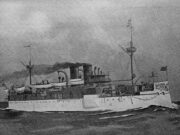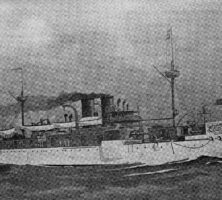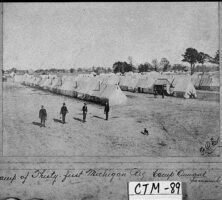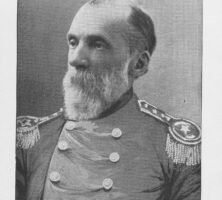On the quiet evening of February 15, 1898, the American exercise in saber rattling with Spain over the Cuban insurrection came to a sudden and violent end. Resting at anchor in the large harbor of Havana, Cuba, the battleship USS Maine erupted in flames, with no warning, as an explosion nearly tore the ship in two. More than 250 sailors died in the vessel’s sinking, and within days Spain was blamed for the attack as many American journalists and politicians cried for war.
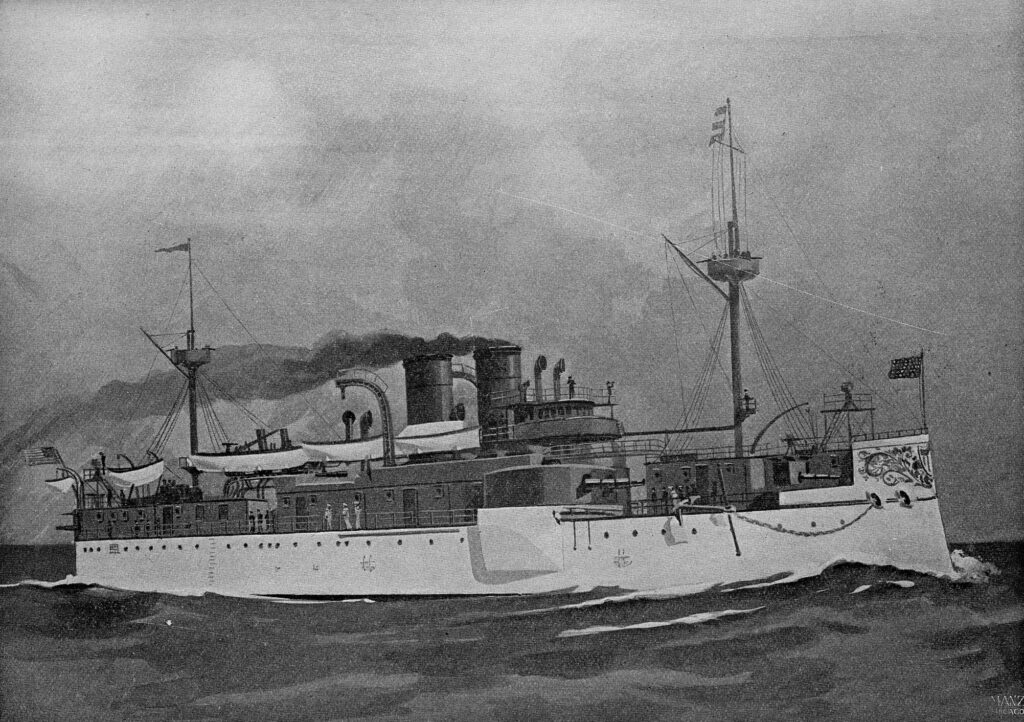
From Pictorial History of Our War with Spain for Cuba's Freedom, by T. White
Just a month earlier in Georgia, several newspapers had reported that any conflict with Spain over Cuba was “not generally wanted.” As soon as news of the Maine reached the state, however, the papers quickly changed their tune and condemned U.S. president William McKinley for not going to war immediately. McKinley succumbed to the war hawks and on April 19 asked Congress to declare war on Spain. The war ended three months later. Most of the manpower mustered for duty abroad served as occupation forces after Spain’s surrender.
Mobilization
On April 23 the federal government requested that Georgia supply 3,000 troops in the form of two regiments of infantry and two batteries of light artillery for the upcoming military campaigns in Cuba, Puerto Rico, and the Philippines. Five days later Governor William Y. Atkinson issued a call for men by setting various quotas for Georgia’s major cities. The first state induction camp was established at Griffin (the seat of Spalding County) on May 4. Volunteer enlistments from the state were slow in coming, but Governor Atkinson eventually mobilized three infantry regiments and two light artillery batteries of the state militia.
The First Georgia Infantry trained at Camp Thomas at Chickamauga, where it fought the famous Thomas “Sham Battle” (actually a huge training exercise). The unit was scheduled to participate in the invasion of Puerto Rico, but the war ended while it was still boarding the troopships in Savannah. The Second Georgia Infantry was rushed through its induction so quickly that most men had not yet been issued their uniforms or equipment when they arrived in Tampa, Florida, where reporters claimed that they “looked like an aggregation of hoboes.” While the Second just missed out on being sent to Cuba, it was used to help put down a large race riot in nearby Ybor City. Only the Third Georgia Infantry would see any overseas duty and that was as an occupation force in Cuba during the first three months of 1899.
At least three companies of the Third U.S. Volunteer Infantry were made up of Georgians who trained in Macon, and three companies of the Tenth U.S. Volunteer Infantry were also formed in the state. Known as an “Immune” regiment, the Tenth comprised southern African Americans who, it was believed, would be immune to both the tropical heat and malarial swamps of Cuba. These men would be subjected to months of racial attacks in both Augusta (July through September 1898) and Macon (November 1898 through March 1899), where they were stationed. When the unit was finally mustered out of service in March 1899, several former members of the Immunes were shot at or verbally abused by white civilians along their train routes home.
Training Camps
Georgia had perhaps the most training camps of any state, more than twenty-five in all, during the Spanish-American War. Albany, Athens, Atlanta, Augusta, Columbus, Griffin, and Macon each had one or more camps. The two most important camps, however, were Camp Onward in Savannah and Camp Thomas in the extreme northwest corner of the state. Savannah was selected as the point of embarkation for the Seventh Army Corps commanded by General Fitzhugh Lee. The corps began to move to Savannah in late October 1898. By the end of the month almost 13,000 men were camped in and around the Forsyth Park area of the old port city. The height of their stay in Savannah was the gigantic Thanksgiving Day dinner celebration hosted by the women of the city. Before shipping out for occupation duty in Cuba or Puerto Rico, the men of Camp Onward held a grand review on December 17 for President McKinley and Generals Lawton, Shafter, and Wheeler. A large banquet was then held at the old De Soto Hotel for the corps officers and visiting dignitaries.
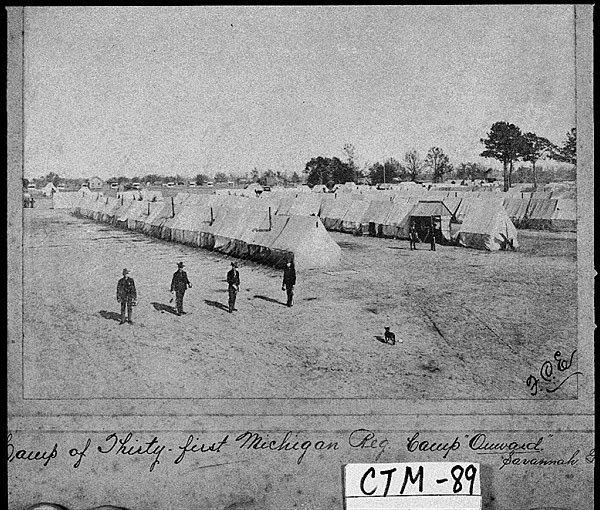
Courtesy of Georgia Archives.
Located on the site of the Civil War (1861-65) battlefield at Chickamauga, Camp Thomas was arguably both the largest training camp and the most deadly in the country. Established shortly before the war was declared, Camp Thomas would be the temporary home to more than 7,000 regular soldiers and to more than sixty regiments of state troops. The site as originally laid out simply could not support so many men concentrated in such a small and wild area. Overcrowding and poor sanitation led to a serious outbreak of typhoid, which caused 752 deaths. The camp was thoroughly investigated after the war, and the findings would have a major influence on military medicine for the next century. The use of female military nurses, improved hospital operations and camp-planning techniques, and sanitary hygiene courses for all personnel were just some of the positive outcomes resulting from the miseries that befell Camp Thomas.
Notable Contributions
Several famous Georgians helped with the war effort. These included Augusta native General Joseph Wheeler, who commanded U.S. volunteers in Cuba. Savannah native General W. W. Gordon accepted the surrender of Puerto Rico, and Marietta native Navy Lieutenant Thomas Brumby, flag officer to Admiral George Dewey, raised the first American flag over Manila and served as Dewey’s negotiator during surrender talks.
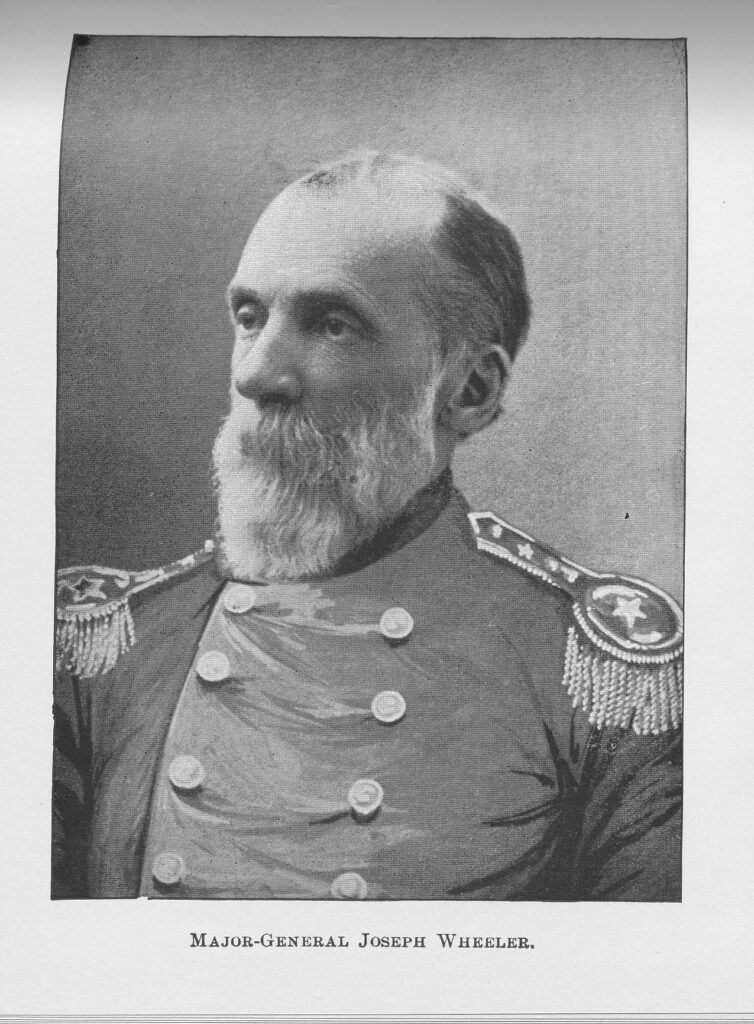
From The Conflict with Spain and Conquest of the Philippines, by H. F. Keenan
Even though the United States was victorious in the war, most Georgians were decidedly against occupying Cuba, Puerto Rico, and the Philippines, much less annexing these areas, as many were calling for. Georgia’s U.S. senators, Alexander Stephens Clay and Augustus Octavius Bacon, and Governor Atkinson were vocal in their opposition to annexation. Senator Bacon actually put forward legislation to block any attempt to annex the Philippines or Cuba.
Georgia’s experience in the Spanish-American War would serve it well in the coming years as the nation headed for World War I (1917-18), in which the state would repeat its role as an important part of America’s victory.


